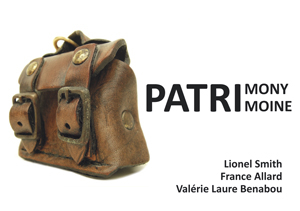"Patrimoine / Patrimony" - a Myths and Metaphors Seminar on IP and Private Law

Patrimony evokes at once a general sense of
transmission and the idea of an assemblage, ever since the origins
of the term in Latin, where patrimonium denoted the
"property of the family, inherited from the father".
The Civil Law first shared this idea of an assemblage. There the
concept of the patrimony takes the shape of a universality,
composed of items of property as well as of obligations, and is
generally tied to a person. This idea is also embodied
through collective patrimonies -already know to the Romans under
the metaphorical expression patrimonium populi, which
meant public treasure- composed of property, of information, of
features that are judged essential for society, the human race or
its environment.
Whether the patrimony is personal or collective, it also conveys a
sense of transmission. Among other things, it brings to mind the
patrimony of the deceased and his succession, the circulation in
the market of rights we dub "patrimonial" or, just as well, the
inheritance constituted by cultural, genetic, and biological
patrimonies.
If the patrimony is, on balance, an assemblage of transmissible
things, its content nevertheless remains unclear and the categories
which arise from it remain porous.
For example, what are we to make of the economic facets of
extrapatrimonial rights? What are the rights in one's image, if not
a monopoly similar to intellectual assets? Thus, what could they be
if not "intellectual property"? Moreover, shouldn't we see all
privileges which bear an economic cast as patrimonial rights?
And what of intellectual property rights with respect to
traditional know-how? Are marketing and development appropriate
legal mechanisms to address the subject-matter of the patrimony
constituted by cultural heritage or, more generally, to address the
field of creation?
From private law to intellectual property law, the concept of the
patrimony leads to the use of legal categories whose bright-lines
seem ever more clouded and grey, if not to say ever more mythical.
Besides, will metaphors serve as pedagogical devices, thereby
allowing us to better grasp the nature of these patrimonial
fissures?
Those interested in attending this second seminar will be able after November 5th, to consult the texts and images prepared by our panellists and, if they wish, publish their own comments (with the images of their choice) on the M&M website.
Panellists:
Lionel Smith, France Allard and Valérie Laure Benabou
Publish your comments!
For this third seminar, we offer interested persons the possibility of publishing a comment on our website as to the text of one of our panellists.
Each comment must include a text with a maximum length of 600 words and, if possible, one or a few images meant to illustrate the principal ideas of the text.
These comments can be transmitted to us, before or after the seminar, by eric.labbe [at] mcgill.ca (email).